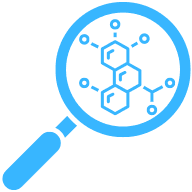Using Biostatistics in Drug and Medical Device Development: 6 Impactful Contributions
In the high-stakes realm of healthcare innovation, biostatistics serves as the backbone, driving advancements from bench to bedside. It's the meticulous analysis of biostatistics that accelerates drug approvals and sharpens medical device diagnostics. Exploring its pivotal role, this post delves into how biostatistics is revolutionizing drug development and personalized medicine.
- Biostatistical Modeling for Neurodegenerative Biomarkers
- Optimized Clinical Trials for Faster Drug Approvals
- Enhanced Accuracy of Medical Device Diagnostics
- Improved Safety Profiles for New Medications
- Efficient Allocation of Research Resources
- Advancements in Personalized Medicine Through Biostatistics
Biostatistical Modeling for Neurodegenerative Biomarkers
Good day,
The role of biostatistics in drug and medical device development is very important, particularly for clinical trial design, biomarker validation, and regulatory approval. An appropriate case in point on biostatistics assisted health enhancement.
A powerful example included biostatistical modeling during the creation of an innovative biomarker for neurodegenerative disease. In one study aimed at Alzheimer's disease, researchers used longitudinal statistical models to analyze cerebrospinal fluid (CSF) and imaging biomarkers. Using Bayesian hierarchical models and survival analysis, they determined patterns that correlated the progression of each biomarker with cognitive decline. The statistical validation of these biomarkers allowed pharma companies to stratify by these measurable markers participants in clinical trials, making drug trials more efficient and targeted.
This work had an incredibly powerful impact. Because biomarkers can predict the clinical outcome (also known as a surrogate endpoint), there has also been a drive to use biomarkers to enable faster early phase clinical trials and better patient selection criteria. This shortened trial lengths and improved the chances of success for disease modifying therapies. This paradigm ultimately informed both FDA and EMA regulatory guidance, as well as the trajectory of modern neurodegenerative drug development.
Optimized Clinical Trials for Faster Drug Approvals
Accelerated clinical trials for faster drug approvals: Using biostatistics, clinical trials can be designed more efficiently, leading to faster drug approvals. By utilizing advanced statistical methods, researchers can optimize trial designs, reduce sample sizes, and shorten trial durations without compromising the validity of the results. This expedites the process of bringing new, potentially life-saving drugs to market.
Faster approvals mean that patients gain quicker access to new treatments. Stakeholders in the pharmaceutical industry should continue to invest in biostatistical expertise to benefit from these optimized clinical trials.
Enhanced Accuracy of Medical Device Diagnostics
Improved accuracy of medical device diagnostics: Biostatistics plays a crucial role in enhancing the accuracy of medical device diagnostics. Through rigorous statistical analysis, researchers can refine diagnostic algorithms, leading to more reliable outcomes. This improves the accuracy of diagnostics and reduces the occurrence of false positives and negatives.
Accurate diagnostics are essential for the early detection and treatment of diseases, which can significantly improve patient outcomes. Continued investment and effort in biostatistical research can further elevate the reliability of medical devices.
Improved Safety Profiles for New Medications
Enhanced safety profiles for new medications: The application of biostatistics in drug development helps in thoroughly evaluating and enhancing the safety profiles of new medications. Biostatistical methods allow for comprehensive monitoring of adverse events and better identification of potential risk factors. This thorough analysis reduces the likelihood of unforeseen side effects reaching patients.
With safer drugs on the market, patient confidence in new treatments can be strengthened. It's critical that pharmaceutical companies prioritize biostatistical analyses to ensure drug safety.
Efficient Allocation of Research Resources
More efficient allocation of research resources: By employing biostatistical techniques, researchers can allocate resources more efficiently in drug and medical device development. These techniques enable the accurate prediction of which studies are more likely to succeed and thus receive the necessary funding and resources. This efficient management saves both time and money while maximizing research productivity.
With optimized resource allocation, scientific discoveries can be accelerated. Organizations should embrace biostatistics to enhance the overall efficiency of their research efforts.
Advancements in Personalized Medicine Through Biostatistics
Data-driven personalized medicine advancements: Personalized medicine has seen significant advancements through the use of biostatistics. Statistical analysis allows for the examination of vast amounts of patient data to identify patterns and correlations that can inform individualized treatment plans. This leads to more effective and tailored healthcare solutions for patients with specific needs and conditions.
The move towards personalized medicine not only improves patient outcomes but also revolutionizes the healthcare industry. The future of medicine relies on the continued application of biostatistics to develop tailored treatments for patients.


